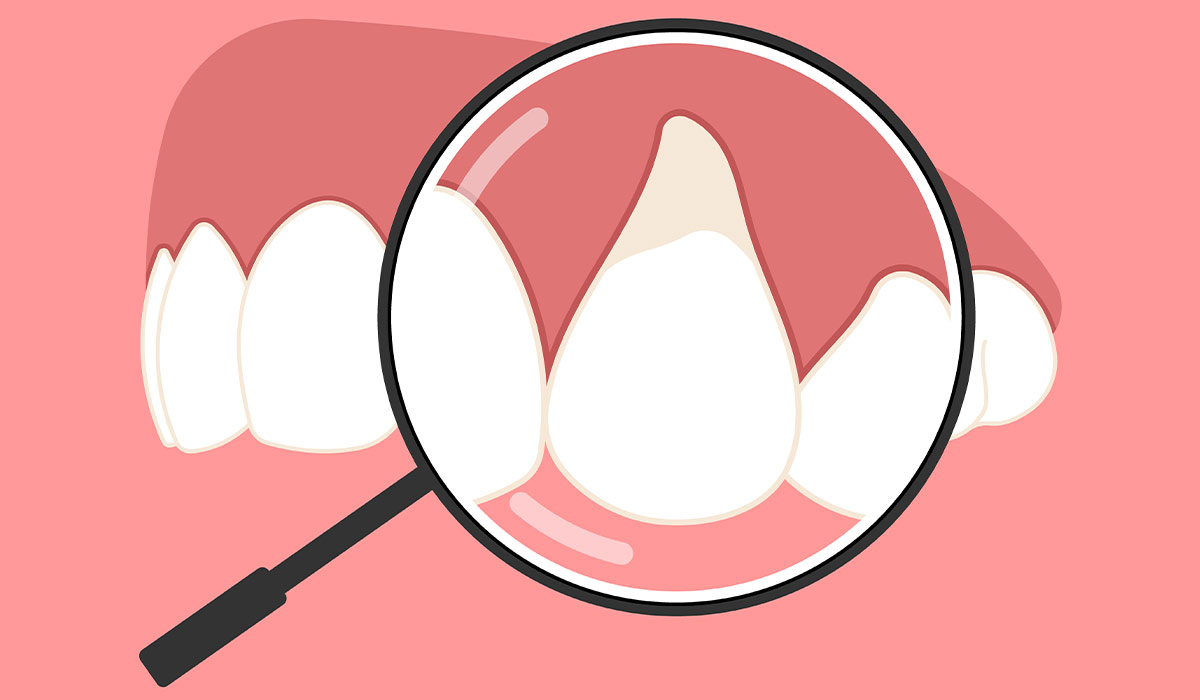Nausea and vomiting often follow one another, and vomiting is a natural progression after a period of nausea. Sometimes, these symptoms may also manifest as an early sign of pregnancy. This ailment during pregnancy, especially during the first trimester, can be troublesome as hormonal changes typically cause it.
In some cases, nausea may occur as a side effect of certain medications, such as painkillers administered during surgery. This type of nausea usually subsides after a few hours without medical intervention.
This ailment may also arise due to severe pain, such as pancreatitis, gallstones, or kidney stones. If accompanied by other symptoms, such as vomiting, diarrhea, or abdominal pain, it may indicate a more serious underlying medical condition that requires immediate medical attention.

What Is Vomiting?
Vomiting is the sudden ejection of stomach contents through the mouth due to intense contractions of the abdominal and chest muscles. They are usually preceded by nausea (as a warning signal), but sometimes they occur without preceding nausea.
Regurgitation is the movement of the stomach contents into the oral cavity without effort, and the reflexes are typical of vomiting. Food contents flow back from the stomach into the mouth. Rumination is the chewing and swallowing food that flows back from the stomach into the mouth due to a conscious increase in intra-abdominal pressure a few minutes after eating or while eating.
Nausea and vomiting can occur independently but are most often related. Other symptoms, such as epigastric pain, heartburn, or belching, often accompany them.
Causes
There are many causes of nausea. The most common include:
- Food poisoning
- Viral or bacterial infections of the digestive tract
- Viral infections of the upper and lower respiratory tract
- Food allergies, for example, milk allergy
- Alcohol or drug poisoning
- Side effects of medications
- Pregnancy
- Migraine
- Motion sickness and seasickness
- Related to chemotherapy or radiotherapy, e.g., due to cancer
- Related to the use of anesthetics and sedation
- Psychogenic nausea, bulimia, reaction to stress, or severe pain
- It may be a reflex to unpleasant sights and smells
How Does It Occur?
The medulla oblongata, commonly called the vomiting center, is the critical nerve center responsible for initiating the vomiting reflex. The chemoreceptor zone at the bottom of the brain’s fourth ventricle provides constant input to this center. The vomiting center communicates the decision to initiate the reflex through contractions of the stomach, intestines, and esophagus, characterized by anti-peristaltic contractions. The simultaneous relaxation of the esophageal sphincters facilitates these contractions.
Contraction of the abdominal muscles and diaphragm, followed by the chest muscles, builds up pressure in the stomach, which eventually exceeds the pressure in the esophagus and mouth by 100-200 mm Hg. The expulsion of stomach contents occurs first into the esophagus and then out.
Individuals with intact nervous systems do not experience the entry of vomit into their respiratory tract since inspiration ceases and the glottis closes simultaneously. The reflex elevation of the soft palate protects against the content entering the nasopharynx and nasal cavity. Additionally, the reflex of closing the glottis and holding the breath helps prevent the entry of content into the respiratory tract. Stimulating the vagus nerve results in other vegetative reflexes, including a drop in blood pressure, decreased heart rate, increased salivation, and pallor. By definition, vomiting is intended to remove harmful toxins or microorganisms that have entered the body, especially the digestive tract.
Which Diseases Cause Nausea?
In the diseases mentioned above and conditions (except pregnancy), nausea disappears within 24 hours, and the prognosis for complete recovery and resolution of symptoms is good. However, relatively dangerous diseases that may cause nausea include:
- Kidney conditions
- Middle ear diseases
- Acute diseases of the abdominal organs, including appendicitis, cholecystitis, perforation or intestinal obstruction
- Stomach and duodenal ulcers or inflammation of the mucous membrane of the upper gastrointestinal tract
- Increased intracranial pressure, e.g., due to hematoma, ischemic stroke, brain tumor, meningitis, and post-traumatic brain edema
- Endocrine disorders, including Addison’s disease or acute thyroid and parathyroid diseases
- Metabolic acidosis in the course of diabetes, renal failure, and other disorders of the body’s water and electrolyte balance
- Heatstroke
- Hypoglycemia, i.e., a decrease in blood glucose levels in people with diabetes
- Ischemic heart disease and heart attack
Pregnancy
Nausea and vomiting are commonly observed symptoms during pregnancy, yet the underlying mechanisms are not yet fully understood despite extensive research. High levels of chorionic gonadotropin (a hormone produced by the embryo and placenta to maintain progesterone production) are believed to be the primary cause of these symptoms. Additionally, studies suggest that these symptoms occur more frequently in women infected with Helicobacter pylori, and other risk factors include low BMI, young age, first pregnancy, and female fetus. It is estimated that about 80% of pregnant women experience nausea and vomiting.
The severity of these symptoms varies, with most cases not interfering significantly with daily functioning. However, severe cases can limit food intake, leading to the pregnant woman’s insufficient protein, carbohydrate, vitamin, and mineral intake. It is essential to note that although these symptoms can be uncomfortable, they pose no threat to the mother or baby. However, in extreme cases, they may result in Wiernicki’s encephalopathy caused by vitamin B1 deficiency. Disturbances of consciousness, incoherent movements, and nystagmus characterize this acute neurological condition.

No Nausea During Pregnancy
Women sometimes perceive the presence of nausea as a symptom of a normal pregnancy. So much so that the lack of nausea during pregnancy becomes a cause for concern for them. Concerned patients sometimes ask their doctor if it is okay for them not to feel nauseous. The lack of stomach problems at the beginning of pregnancy should not be a cause for concern. There is no connection with the possibility of miscarriage.
It is worth remembering that each pregnancy is different. Nausea and vomiting occur in up to 80% of cases of pregnant women, but their absence does not mean that something disturbing is happening to the baby. Women who do not feel nauseous should consider themselves among the lucky ones who have avoided one of the most unpleasant symptoms of pregnancy.
Diagnostic Tests
The diagnosis is based on an interview, physical examination, and additional tests. Often, a thorough history and physical examination determine the diagnosis – typical symptoms accompany others. In some cases, the reason for vomiting is obvious (e.g., in a cancer patient taking chemotherapy or a person who has abused alcohol). It can be determined based on the medical interview alone. On the other hand, any woman with unexplained nausea and vomiting who may be pregnant should undergo a pregnancy test immediately and should not be given any medications until the result is obtained.
Laboratory Blood Tests
In other cases, laboratory blood tests are helpful (e.g., high glucose levels in a diabetic coma, creatinine and urea in uremia, thyroid hormones in diseases of this organ, bilirubin in viral hepatitis, troponin in recent heart attack). Examining the patient’s urine is of similar importance – characteristic changes are observed in the course of diabetes, kidney diseases, various liver diseases, etc.
Lumbar Puncture
Sometimes, the specialist does lumbar puncture with a collection of cerebrospinal fluid (when suspected subarachnoid hemorrhage or meningitis).
Imagining and Other Tests
If such an initial assessment of the patient does not provide a clear answer to the question about the cause of nausea/vomiting, the doctor will consider further diagnostics. These may be, for example:
- Skull imaging tests (computed tomography or magnetic resonance imaging)
- Chest radiological examination
- ECG and possibly coronary angiography
- Endoscopy of the upper gastrointestinal tract
- Ultrasound or computed tomography of the abdomen
Why Is Diagnosis Important?
Nausea and vomiting, at times, may indicate a serious underlying condition, such as gastrointestinal obstruction. It is often accompanied by severe abdominal pain and sudden passage of gas and stools and requires prompt surgical intervention to prevent life-threatening consequences.
In some cases, determining the cause of chronic vomiting lasting beyond seven days may require additional diagnostic procedures. For instance, a consultation with an endocrinologist may be necessary to evaluate the list of diseases of the internal secretion organs underlying vomiting and nausea. Such diseases typically include thyroid or parathyroid gland disorders. Other diagnostic measures may involve seeking consultations with a psychologist or psychiatrist. Vomiting may be an indicative symptom of bulimia, anorexia, or psychogenic causes, which require specialized management approaches.
When Is Nausea Dangerous?
A crucial aspect of diagnosing and treating nausea is distinguishing between ordinary nausea, which is often physiological, and nausea, which may be a symptom of a more serious underlying condition. Identifying the cause of nausea among frequent and harmless sources such as food poisoning, pregnancy, or alcohol abuse is the first step. The cause should also be differentiated based on the patient’s age, as nausea in children may be due to infection, food allergy, overeating, or a strong cough. In contrast, nausea in a young woman may indicate pregnancy, and in seniors, it may indicate changes in the brain or gastrointestinal diseases.
To differentiate, it is crucial to take note of the co-occurrence of other dangerous symptoms, such as high fever, severe abdominal pain, delirium, nausea immediately after waking up accompanied by a headache, the appearance of heart palpitations, and chest pain. In the presence of these symptoms, it is imperative to consult a doctor and perform basic diagnostics. If vomiting accompanies nausea, especially if it is bloody, immediate medical attention is necessary. The same applies if the symptoms occurred after a previous head injury, loss of consciousness, or a sudden and very severe headache.
Management
Treatment of nausea depends on its cause. The most important thing is to identify and remove it.
Diet
In cases of minor nausea related to the causes mentioned above, simply resting in a lying position and following proper dietary management, i.e., incorporating an easily digestible diet and drinking lukewarm fluids, preferably in small portions, may be helpful.
Avoid fatty products containing milk, fresh vegetables, fruits, and spicy spices. If vomiting also occurs, it is necessary to replenish the lost fluids and electrolytes to prevent dangerous dehydration.

Medication
In the case of motion sickness or psychogenic nausea, it is worth taking antihistamines, which act on the central nervous system and inhibit the vomiting reflex.
Home Remedies
Home remedies for nausea include rest, fresh air, various herbal infusions and drops types (e.g., mint), almonds, or ginger, widely used in natural medicine.
Please remember that if nausea is so severe that it leads to vomiting, you should not try to stop it by force. If the cause of the ailment is, for example, food poisoning, vomiting is a physiological way in which the body wants to get rid of harmful substances.
Prevention
If you suffer from a condition that causes nausea, you can use several methods to reduce or even prevent this unpleasant condition:
- Eat small portions at regular intervals
- Avoid spicy and hot foods
- Avoid overeating and stretching the stomach walls
- Avoid irritating sights and smells, such as intense perfumes, smoke, cooking odors
- Avoid alcohol
- If you suffer from motion sickness, avoid large meals before the trip, do not read during the trip, and use antihistamines or promazine derivatives as a preventive measure (these drugs are contraindicated during pregnancy)
Sources
- Vomiting. NIH.
https://pubmed.ncbi.nlm.nih.gov/19412902/ - What Is Nausea? A Historical Analysis of Changing Views. NIH.
https://www.ncbi.nlm.nih.gov/pmc/articles/PMC5203950/ - Feeling sick (nausea). NHS.
https://www.nhs.uk/conditions/feeling-sick-nausea/ - Nausea: a review of pathophysiology and therapeutics. NIH.
https://www.ncbi.nlm.nih.gov/pmc/articles/PMC4699282/ - Nausea and vomiting of pregnancy – What’s new?. NIH.
https://pubmed.ncbi.nlm.nih.gov/27209471/ - Nausea and Vomiting in Pregnancy (NVP). NIH.
https://www.ncbi.nlm.nih.gov/books/NBK582541/ - Nausea and vomiting in adults–a diagnostic approach. NIH.
https://pubmed.ncbi.nlm.nih.gov/17885699/ - Dietary strategies for chemotherapy-induced nausea and vomiting: A systematic review. NIH.
https://pubmed.ncbi.nlm.nih.gov/36067586/ - Antihistamines for motion sickness. NIH.
https://www.ncbi.nlm.nih.gov/pmc/articles/PMC9575651/ - Coping with nausea and sickness. NHS.
https://www.uhsussex.nhs.uk/resources/coping-with-nausea-and-sickness-2/















